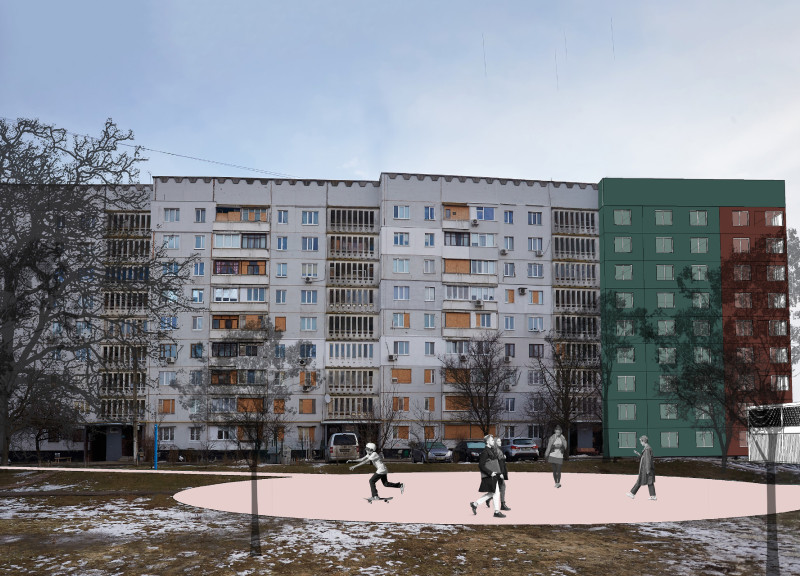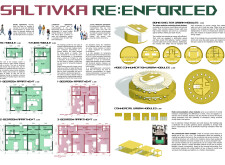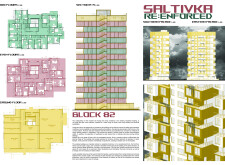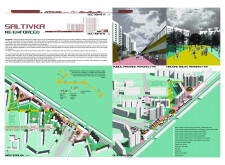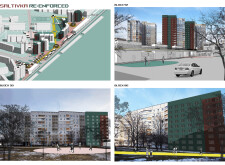5 key facts about this project
### Overview
Located on the outskirts of Kharkiv, Ukraine, the Saltivka Re:Enforced initiative addresses critical housing and community infrastructure needs arising from the challenges of warfare. This architectural endeavor employs modular design principles to create a flexible and functional urban environment that accommodates a variety of residents, from individuals to families. The project aims to create not just shelters, but also a supportive social framework for the affected community.
### Modular Housing Design
The housing typologies within the project are strategically developed to meet diverse demographic needs. Studio apartments provide essential living and sleeping areas for young professionals and students, while one-bedroom units cater to couples or singles. Two- and three-bedroom apartments offer family-oriented living options, designed to balance privacy with opportunities for communal engagement. This modular approach facilitates quick assembly and modification, supporting a wide range of living arrangements.
### Community-Centric Urban Modules
In addition to residential spaces, the initiative incorporates urban modules that fulfill key community functions. Bomb shelter urban modules provide reinforced protection and are equipped with solar energy systems, allowing them to double as community centers. Node communication urban modules serve as vertical transport stations and gathering spaces, enhancing connectivity and fostering social interaction among residents. This design promotes integration within the neighborhood while addressing safety concerns in a conflict-affected area.
### Material Selection and Sustainability
The material choices for the project prioritize durability and performance. Reinforced concrete is widely used for structural stability in the bomb shelter modules, while prefabricated concrete panels streamline construction and reduce timelines. Glass is incorporated into the facades to allow natural light and enhance aesthetic appeal, with safety considerations integrated into their design. Additionally, insulation materials are utilized in walls and roofs to improve energy efficiency and thermal comfort for residents, further promoting sustainable living practices throughout the community.


